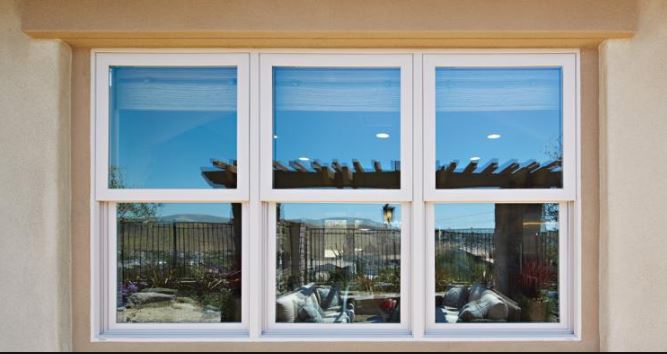How to Store and Protect Musical Instruments in a Climate-Controlled Storage Unit

The longevity of musical instruments depends on the correct maintenance and conservation of these priceless belongings. Your instruments can be effectively protected by being kept in a climate-controlled storage unit.
To safeguard them from excessive temperatures, humidity, and other harmful elements, climate control creates a consistent environment.
However, it is insufficient to merely rent a climate-controlled storage space. You must utilise the appropriate packing supplies, correctly prepare your musical instruments for storage, and select the best storage facility for your unique requirements.
In this post, we’ll provide you with all the advice you need to keep and safeguard your musical instruments in a climate-controlled storage facility.
Use your case for storing
A case is one of the most effective ways to preserve your musical instruments in a climate-controlled storage unit.
Your instrument’s casing is made to shield it from physical harm, debris, and humidity. Ensure your instrument is thoroughly cleaned and dried before storing it inside a case.
To stop rust or mould from developing during storage, clean the instrument’s surface of any moisture or debris. Moreover, relax the strings on stringed instruments to avoid putting extra strain on the bridge and neck.
When placing your instrument in the case, ensure it fits snugly but is not overly tight. If the case is too tight, it could cause damage to your instrument or its components. Ensure enough padding inside the case to prevent the instrument from moving around during transport or storage.
Close the case securely and store it in a safe location in the climate-controlled storage unit. Using a case helps protect your instrument from damage and makes it easy to transport and store.
Make sure the instrument is clean before putting it in storage
Cleanliness is essential when storing musical instruments. Make sure it is clean before putting it in a storage facility. Uncleaned items are susceptible to rust, mould, and other sorts of damage over time, which can be expensive to restore.
For stringed instruments, wiping them down with a soft cloth to remove dust or dirt is important. Using a mild cleaning solution or polish designed for the specific type of wood can also help protect the instrument’s finish.
Cleaning brass or woodwind instruments with a specialised cleaning solution and a soft cloth is crucial. Watch out so you do not damage any delicate parts.
Cleaning the instrument’s inside, including its pipes and chambers, is essential to get rid of any moisture that may have built up. This may aid in halting the growth of mould or other kinds of harm.
Once the instrument is clean, it should be allowed to air dry completely before being placed in its case or storage container. This prevents any moisture from being trapped inside the case and causing damage to the item over time.
Why you need to use climate-controlled storage
When storing musical instruments, keeping them in a climate-controlled storage unit is essential.
Musical instruments, especially those made of wood, are sensitive to changes in temperature and humidity. Fluctuations in these conditions can cause the instrument to warp, crack, or even split, leading to irreparable damage.
A climate-controlled storage unit provides consistent temperature and humidity levels, reducing the risk of damage to your musical instruments.
Excessive heat and moisture can cause swelling, while low temperatures can cause the instrument to shrink and become brittle. Humidity, in particular, can significantly impact the sound quality of instruments, as it affects the tone and resonance of the instrument.
With climate-controlled storage, you can protect your instruments from extreme temperatures and humidity, preserving their condition and sound quality for years to come.
How to store different types of instruments
To maintain their longevity and protection, musical instruments should be stored carefully because they might be delicate and priceless objects. Different instrument types need different storage methods to protect them from deterioration or damage.
It’s essential to understand how to properly preserve your instruments, whether you’re a professional musician, a collector, or a casual enthusiast.
Each instrument, from wind to string, needs particular considerations to be kept in top working order.
To help assure their safety and preservation, we’ll cover how to store different types of instruments below, including guitars, violins, pianos, brass instruments, and woodwind instruments.
Drums and pianos
Drums can be tricky to store due to their size and shape. It is essential to disassemble them as much as possible, take apart the stands and hardware, and pack them separately in protective cases.
The drums should be stored in a padded case or wrapped in blankets to prevent scratches and dents. Climate-controlled storage is essential to protect the drumheads from cracking or warping due to temperature and humidity changes.
Pianos are even more delicate and require specialised care for proper storage. Keeping them in a climate-controlled environment is crucial to prevent damage to the soundboard and tuning mechanisms.
The piano should be covered with a protective cloth to prevent dust accumulation and scratches. The keys can be secured with a lock or tape to prevent them from being pressed accidentally during transportation or storage.
Stringed instruments
Stringed instruments, like guitars, violins, cellos, and harps, are delicate and require proper storage to maintain their condition. When storing stringed instruments, it is crucial to keep them in a climate-controlled unit to avoid damage from changes in temperature and humidity.
First, loosen the strings slightly to relieve tension on the instrument’s neck and bridge. Then, clean the instrument with a soft cloth to remove dirt, dust, and rosin residue. Apply a light coat of polish to protect the finish, but avoid getting it on the strings or other sensitive areas.
Next, place the instrument in its case, ensuring that it fits snugly and does not move around. Use a case with a soft lining to protect the instrument’s finish, and use a case humidifier if necessary to maintain proper humidity levels.
Store multiple stringed instruments separately in their own cases to avoid scratches or damage from contact with other instruments. Label each case with the instrument’s name and ensure that they are stored to minimise the risk of damage from falling or shifting.
Woodwinds
Woodwind instruments, such as flutes, clarinets, saxophones, and oboes, require proper care when being stored.
Before storing a woodwind instrument, make sure it is clean and dry. Disassemble the instrument into its individual parts, and clean each part with a soft cloth to remove any moisture or dirt.
Apply bore oil to the instrument’s interior to prevent the wood from drying. Do not apply any harsh chemicals or solvents when cleaning the instrument, as they can damage the wood or the keys.
Once the woodwind instrument is clean and dry, store it in a sturdy case designed for its specific shape and size. The case should be lined with a soft, non-abrasive material to prevent scratching or damage to the instrument.
Store the case in a dry, climate-controlled area away from direct sunlight and extreme temperatures. Check the instrument periodically to ensure it is still clean and dry and to prevent any issues from arising.
Conclusion
Proper storage of musical instruments is crucial to maintain their value, sound quality, and overall longevity. Each requires specific care and attention when storing, whether it is a stringed instrument, drum, piano, or woodwind.
Always ensure the instrument is clean, dry, and packed properly before storing it. Climate-controlled storage facilities are highly recommended to protect the instrument from temperature and humidity fluctuations.
Taking the time to store and protect your musical instrument properly will ensure that it remains in good condition for years


:strip_icc()/BEHR_25.03_COLORTRENDS_TC_LIV_101c-38834c32890e4cae975ce7030623f632.jpg)

